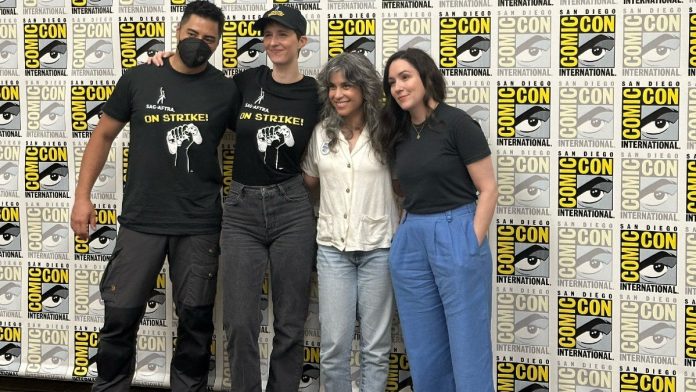Video Game Actors Strike: Unpacking the AI Loopholes and Industry Negotiations
The recent San Diego Comic-Con press conference unveiled a storm brewing in the video game industry: the striking revelations about negotiations between voice actors and major game companies. The fallout has left many asking, “Why did talks break down, leading to a strike by SAG-AFTRA?”
The SAG-AFTRA Strike: What Went Wrong?
After a grueling **18 months of negotiations**, the conversation around the Interactive Media Agreement—which governs voice acting and motion capture for video games—came to an unsettling halt. According to SAR-AFTRA representatives, the guild’s negotiations with video game developers, including industry giants like Activision, EA, and Disney, disintegrated primarily due to complex issues surrounding the use of **artificial intelligence (AI)** in the industry. Committee chair **Sarah Elmaleh** described the final counteroffer as “partially but dangerously incomplete.”
AI Concerns: The Heart of the Negotiation Breakdown
Elmaleh, known for her roles in **“Hi-Fi Rush”** and **“Fortnite,”** highlighted major concerns regarding AI loopholes in the offers presented. She emphasized that these loosened protections are as numerous as the characters actors have portrayed throughout their careers. The lack of comprehensive AI safeguards left many voice actors feeling vulnerable.
The issue was compounded by **Ray Rodriguez**, SAG-AFTRA’s chief contracts officer, who pointed out how video game companies restricted protection to voice performances, explicitly excluding protections for motion capture—an essential facet of game development. This raised eyebrows and ignited fierce discussions among industry professionals.
Voice Actors Left in the Lurch
As the tension escalated, Elmaleh conveyed the profound impact on voice actors. A counterproposal maintained that their names couldn’t be integrated into AI systems. However, a gaping loophole remains: studios could still input specific **roles** into AI systems, enabling them to replicate an actor’s voice without utilizing their name. This revelation leads to daunting questions about authorship and ownership in a technology-driven landscape.
Rodriguez further explained how such constraints not only affected voice actors but also those engaged in **motion capture**. The protection offered was dourly limited, drawing a line on whether digital replicas bore a likeness to the actors. “More commonly,” Rodriguez noted, “video games utilize varied actors for facial models, making this protection all but fruitless.”
The Fallout: Industry Responses and Future Outlook
In light of the **rejected offer**, the industry representatives sought to introduce alternative suggestions that claimed to enhance protections for motion capture. Still, these offered little consolation, as safeguards were deemed ineffective. “If the digital avatar doesn’t resemble the actor, then the likelihood of protection is nil,” Rodriguez stated, resonating with many concerned about the future of voice and performance capture in video games.
Following these discussions, a spokesperson from the video game producers issued a statement expressing disappointment. They claimed, “We are prepared to resume negotiations,” indicating that the companies remain hopeful for a resolution. This ongoing dialogue suggests that both sides could find common ground if they navigate the sticky web of AI regulations.
Seeking Solutions: Progress Amidst Challenges
Despite the setbacks, Rodriguez affirmed that meaningful agreements had already been reached on **24 out of 25 proposals**, which includes historic wage increases and safety provisions. The producers claimed their offer responded directly to SAG-AFTRA’s concerns, ensuring significant **AI protections** requiring consent and fair compensation, potentially paving the way for more robust safety bearings in the industry.
What Lies Ahead for Voice Actors and Game Developers?
The central question looming over these negotiations pertains to the balance between innovation and ethical considerations in the use of **artificial intelligence**. Elmaleh’s assertions underline the pressing need for comprehensive regulations to protect the creative rights of voice actors in an increasingly digital landscape. So, can both parties come to a resolution that respects the artistry and innovation within the gaming industry? Only time will tell.
Keep an eye on TheWrap’s ongoing coverage of the San Diego Comic-Con for the latest updates in the saga!

